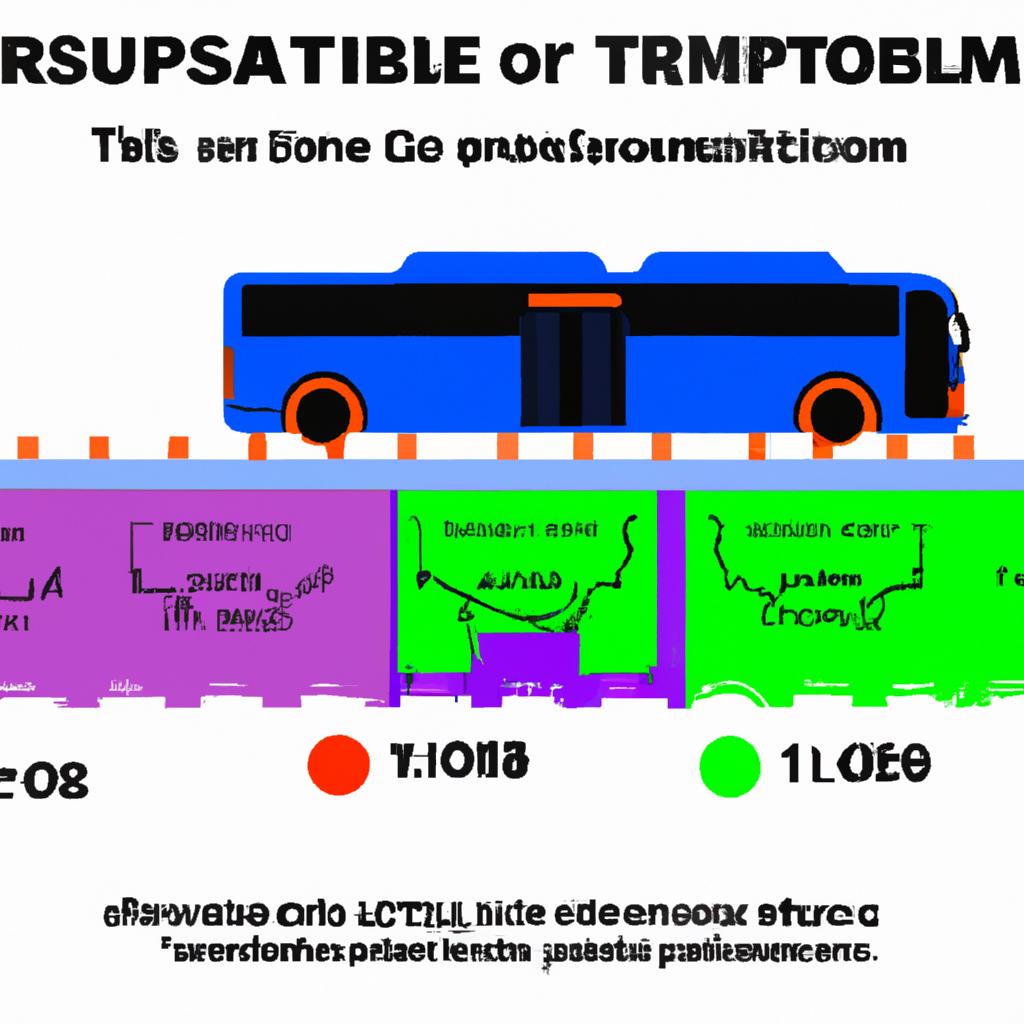Are you tired of spending hours stuck in traffic or struggling to find parking? Look no further than public transportation! With numerous benefits, public transportation is the way to go. Not only does it alleviate traffic congestion, but it also reduces air pollution, saves you money, and promotes a healthy lifestyle. Say goodbye to the stress of commuting and embrace the advantages of public transportation.

Cost Savings
Public transportation offers several cost-saving benefits that can have a positive impact on your budget. One of the most noticeable advantages is lower transportation expenses. By utilizing public transportation, you can significantly reduce the amount of money you spend on gas or other fuel costs. Instead of filling up your tank regularly, you can rely on buses, trains, or trams to take you where you need to go.
In addition to saving on fuel costs, public transportation also eliminates the need for parking fees. If you’ve ever had to pay for parking in a busy city, you know how quickly those expenses can add up. With public transportation, you can skip the hassle of finding parking spaces or paying exorbitant fees. All you need to do is hop on a bus or a train, and you’ll be on your way without worrying about parking meters or parking garages.
Environmental Impact
Using public transportation can have a significant impact on the environment. One of the main environmental benefits is reduced greenhouse gas emissions. Unlike personal vehicles, public transportation options often carry a larger number of passengers, resulting in fewer cars on the road and reduced carbon emissions. By choosing to travel on buses or trains, you are actively supporting efforts to combat climate change and reduce air pollution.
Lower pollution levels are another advantage of public transportation. Vehicles contribute heavily to air pollution, emitting harmful pollutants that negatively affect public health and the environment. By opting for public transportation, you are helping to decrease pollution levels and improve air quality in your community. This not only benefits you but also contributes to the well-being of others and the overall sustainability of our planet.
Public transportation also plays a vital role in conserving energy resources. Compared to personal vehicles, mass transit options are designed to be more energy-efficient. By consolidating passengers into larger vehicles, public transportation systems maximize energy usage and minimize waste. This conservation of energy contributes to the long-term preservation of valuable resources and helps in achieving a more sustainable future.
Traffic Reduction
If you’re tired of sitting in traffic jams during your daily commute, public transportation offers a solution. One of the most noticeable advantages is decreased congestion on the roads. By choosing to travel on buses, trains, or other forms of mass transit, you are actively contributing to reducing the number of cars on the road. This, in turn, leads to smoother traffic flow and less time spent idling in bumper-to-bumper traffic.
In addition to reducing congestion, public transportation also leads to faster commute times. Dedicated bus lanes or priority for trains allow for quicker travel, especially during peak hours. With less time spent stuck in traffic, you can arrive at your destination sooner, allowing you to make the most of your day and minimize the stress associated with long commutes.
Improved traffic flow is another significant benefit of public transportation. When more people opt to use buses or trains, it helps distribute the traffic load more evenly. This results in a smoother overall flow of vehicles, reducing bottlenecks and improving the efficiency of the transportation system. By contributing to improved traffic flow, you are not only benefiting yourself but also the entire community.
Health Benefits
Using public transportation can positively impact your health in several ways. One of the main health benefits is increased physical activity. Walking to and from bus stops or train stations becomes part of your daily routine when relying on public transportation. Regular physical activity has been proven to have numerous health advantages, such as improved cardiovascular health, increased stamina, and reduced risk of chronic conditions.
Public transportation also helps reduce stress levels. Driving in heavy traffic or searching for parking spaces can be stressful and contribute to anxiety and tension. By letting someone else handle the driving, you can sit back, relax, and use the commuting time for yourself. Whether you choose to read a book, listen to music, or simply enjoy the view, public transportation allows for a more peaceful and stress-free experience.
Another health benefit of using public transportation is improved air quality. Personal vehicles emit pollutants that can harm the respiratory system and contribute to respiratory illnesses. By opting for buses or trains, you are actively reducing your exposure to harmful air pollutants, leading to improved air quality for both yourself and the entire community. The cleaner air can have a positive impact on respiratory health, especially for individuals with pre-existing conditions.

Safety
Safety is a top priority when it comes to transportation, and public transportation is designed with your safety in mind. One of the major safety benefits is a lower risk of accidents. Public transportation is operated by professional drivers who undergo rigorous training and adhere to strict safety protocols. This ensures that you are in the hands of skilled professionals who prioritize the safety of passengers and other road users.
Public transportation systems also implement various security measures to ensure the safety of commuters. Surveillance cameras, emergency call buttons, and designated staff are commonplace in buses, trains, and stations. These measures provide a sense of security and help deter and prevent potential incidents. Knowing that safety is a priority when using public transportation can provide peace of mind and make your journeys more enjoyable.
Social Benefits
Using public transportation offers numerous social benefits that contribute to the well-being of communities. One of the main advantages is the promotion of social interaction. Public transportation brings people from diverse backgrounds together, fostering connections and interactions that might not occur otherwise. By sharing a bus or train ride, you have the opportunity to meet new people, engage in conversations, and develop a sense of community.
Public transportation also plays a significant role in community development. A well-connected transportation network encourages economic growth, making it easier for individuals to access employment opportunities and businesses. Additionally, public transportation helps bridge the gap between different neighborhoods, promoting social equity and inclusivity. It allows individuals from diverse populations to move freely, breaking down barriers and fostering a sense of unity within the community.
Another social benefit of public transportation is its accessibility to diverse populations. Unlike personal vehicles, public transportation is designed to accommodate individuals with disabilities. Accessible stations and vehicles ensure that everyone, regardless of their mobility level, can utilize public transportation easily. This inclusivity promotes equality and ensures that transportation options are accessible to all, regardless of physical abilities.
Reliability
When it comes to transportation, reliability is paramount. Public transportation offers several advantages in terms of reliability. One of the key benefits is consistent schedules. Buses, trains, and trams operate on predetermined schedules, ensuring that you can plan your day with confidence. This predictability allows you to arrive at your destination on time, whether it’s for work, appointments, or leisure activities.
Predictable arrival times are another advantage of public transportation. Unlike personal vehicles, which are subject to traffic conditions and unexpected delays, buses and trains often have dedicated lanes or tracks that allow for efficient travel. This means that you can rely on public transportation to get you to your destination at the expected time, eliminating the stress and uncertainty associated with unexpected delays.
Choosing public transportation also means experiencing fewer unplanned delays. Public transportation systems often have contingency plans in place to address unexpected situations such as road closures, accidents, or inclement weather. These systems are designed to minimize disruptions and ensure that you can reach your destination without unnecessary hold-ups. By relying on public transportation, you can enjoy a smoother and more reliable commute experience.
Accessibility
Public transportation offers a wider reach for individuals, allowing them to travel to various destinations with ease. Whether you’re commuting to work or exploring a new part of your city, public transportation systems provide convenient travel options. By utilizing buses, trains, or trams, you can extend your reach beyond the limits of personal vehicles and explore new areas without the hassle of driving and parking.
In addition to the wider reach, public transportation also caters to the needs of disabled individuals. Accessible stations and vehicles ensure that individuals with mobility challenges can navigate the transportation system comfortably. Features such as ramps, elevators, and designated seating areas accommodate individuals using wheelchairs or other mobility aids. Public transportation’s commitment to accessibility ensures that everyone can benefit from its services and enjoy the freedom of movement.
Reduced Road Infrastructure
By opting for public transportation, you contribute to reduced road infrastructure needs. Public transportation systems are designed to move a large number of people efficiently, reducing the need for extensive road expansion. By focusing on improving and expanding public transportation options, communities can minimize the environmental impact of road construction and preserve valuable landscapes.
Public transportation also leads to lower maintenance costs for roads. With fewer personal vehicles on the road, the wear and tear on existing infrastructure are reduced. This translates to lower maintenance costs and less strain on limited resources. By investing in public transportation, communities can allocate resources more efficiently and ensure the sustainable maintenance of their transportation networks.
Preserved landscapes are another advantage of reduced road infrastructure. By minimizing road expansion, communities can preserve natural habitats, green spaces, and scenic areas. Public transportation encourages sustainable urban development by reducing the need for land-intensive road projects, allowing communities to maintain their natural beauty and enhance overall quality of life.
Economic Benefits
Public transportation offers several economic benefits that contribute to the well-being of communities. One of the main advantages is the stimulation of local businesses. By providing convenient transportation options, public transportation systems help drive economic activity. Commuters and residents can easily access businesses, shopping centers, and other commercial areas, supporting local merchants and strengthening the local economy.
Public transportation also plays a crucial role in supporting the public transportation industry itself. A robust public transportation network requires personnel, vehicles, infrastructure, and maintenance, all of which contribute to job creation and economic growth. By utilizing public transportation, you are actively supporting the industry and encouraging investment in sustainable transportation solutions.
Additionally, public transportation can lead to increased property values near transit hubs. Properties located near public transportation stations or stops tend to be highly sought after due to the convenience and accessibility they offer. As a result, these properties often see an increase in value, benefiting homeowners and contributing to the overall prosperity of the community. By living near public transportation, you can enjoy the added financial benefit of potential property value appreciation.
In conclusion, public transportation offers a wide range of advantages that make it a valuable option for individuals and communities alike. From cost savings to environmental impact, traffic reduction to health benefits, and safety to economic benefits, public transportation provides a multitude of benefits that enhance quality of life and promote sustainable and inclusive communities. By choosing to utilize public transportation, you can contribute to a better future for yourself and future generations while enjoying the many advantages it offers.

